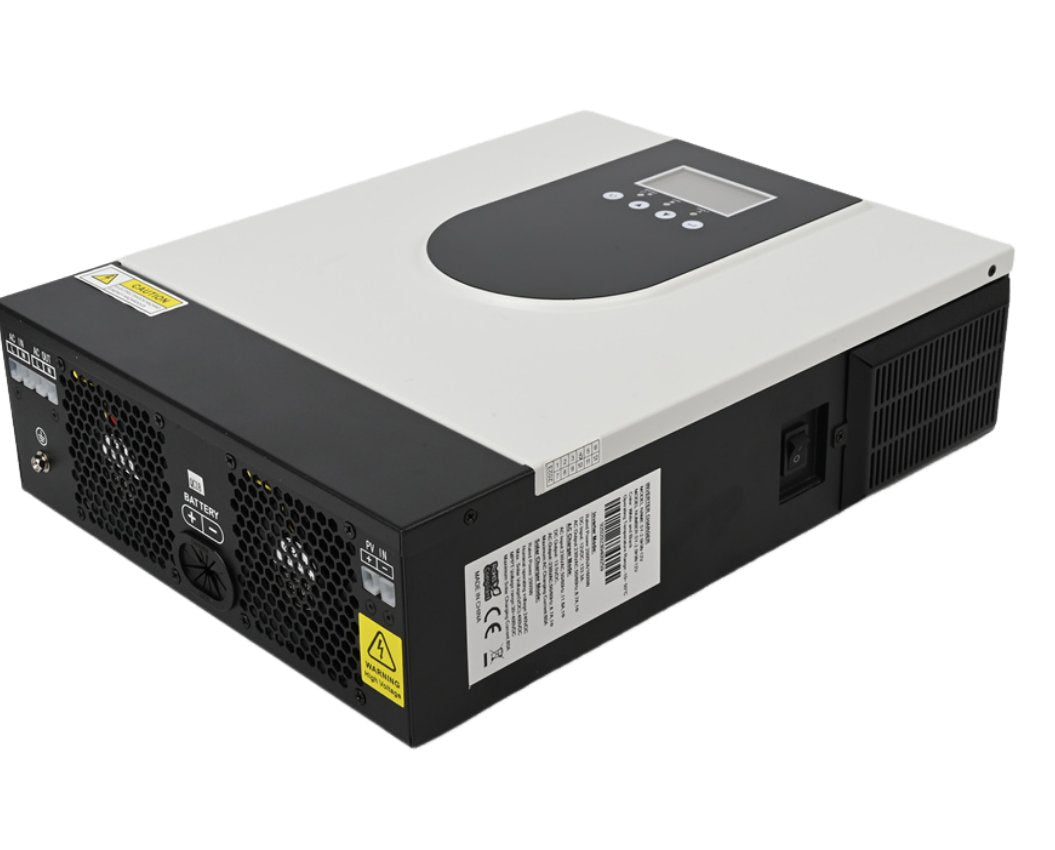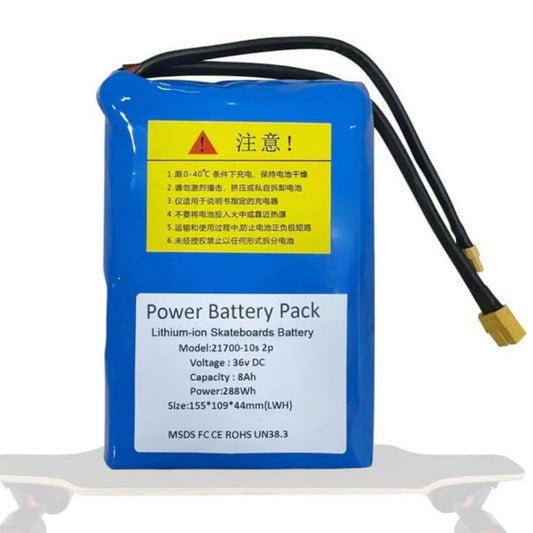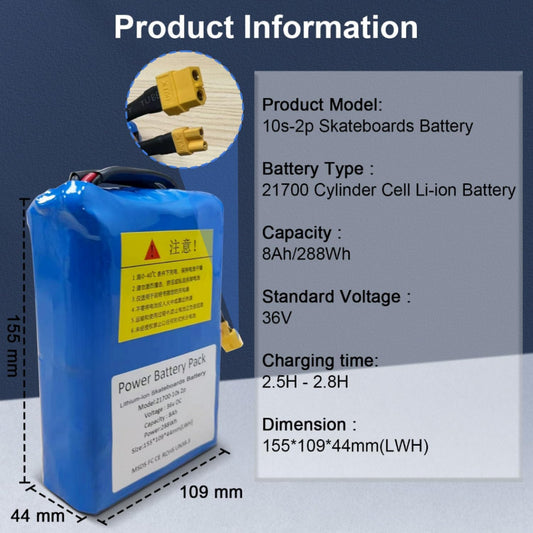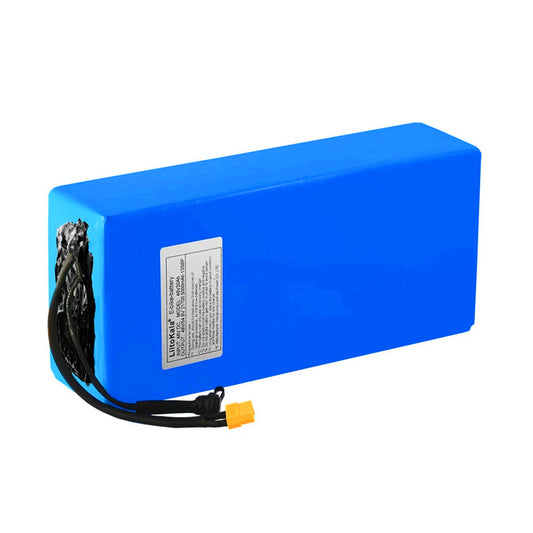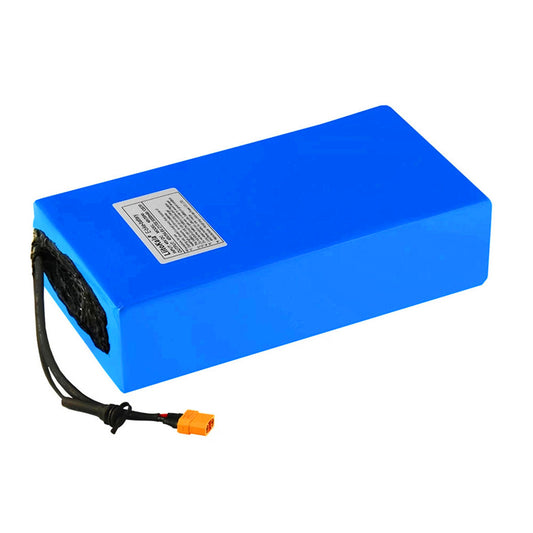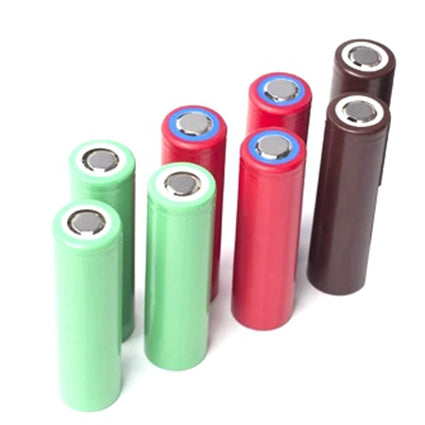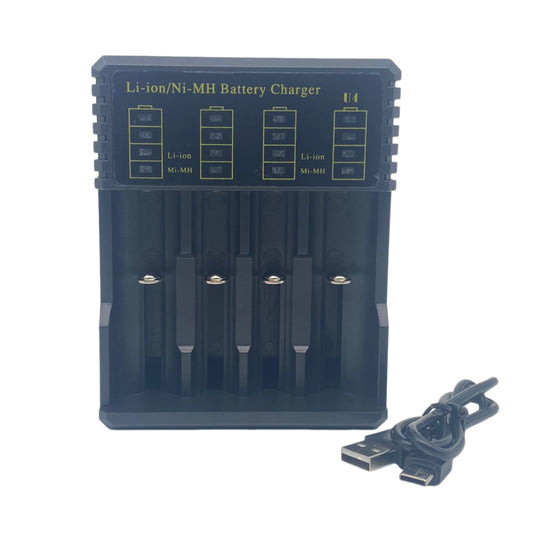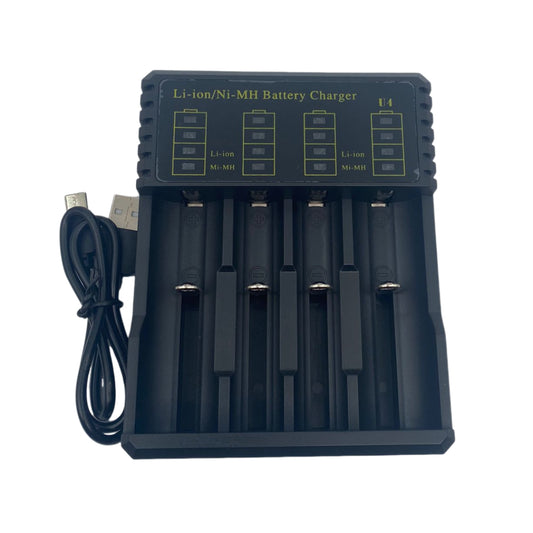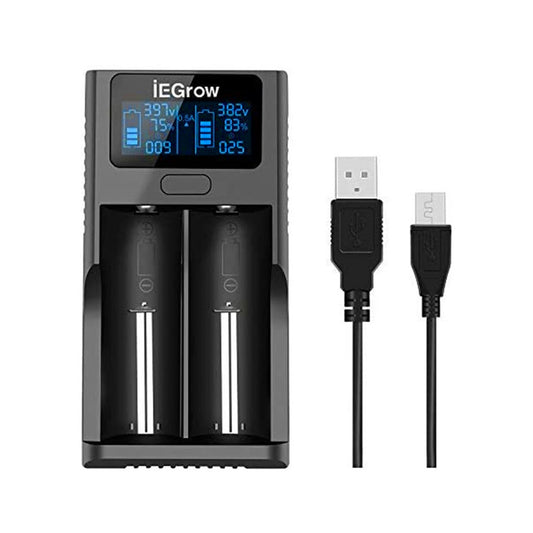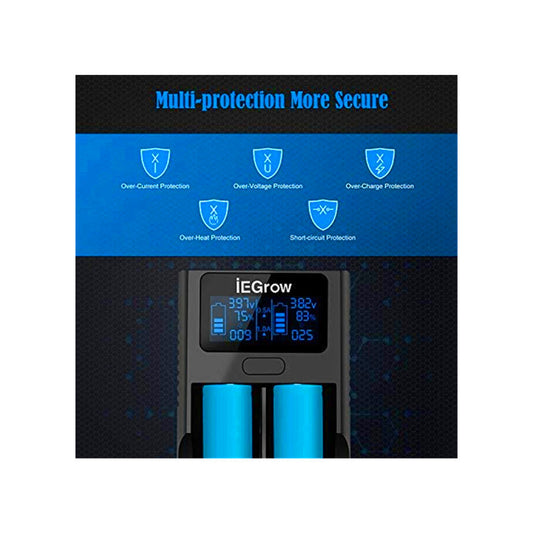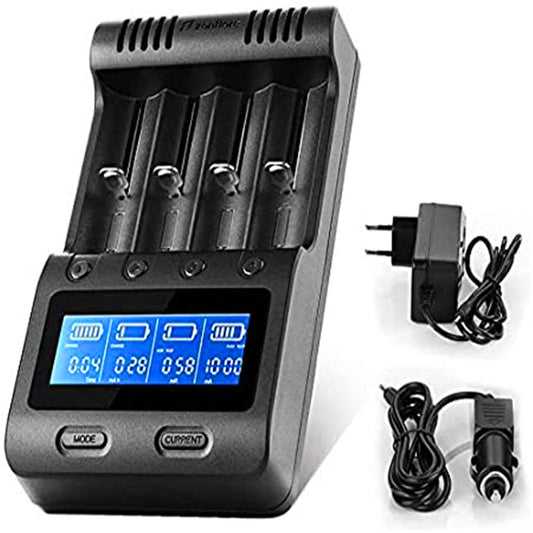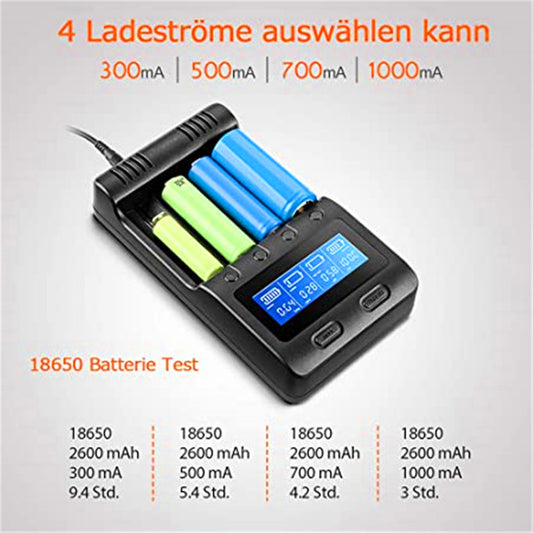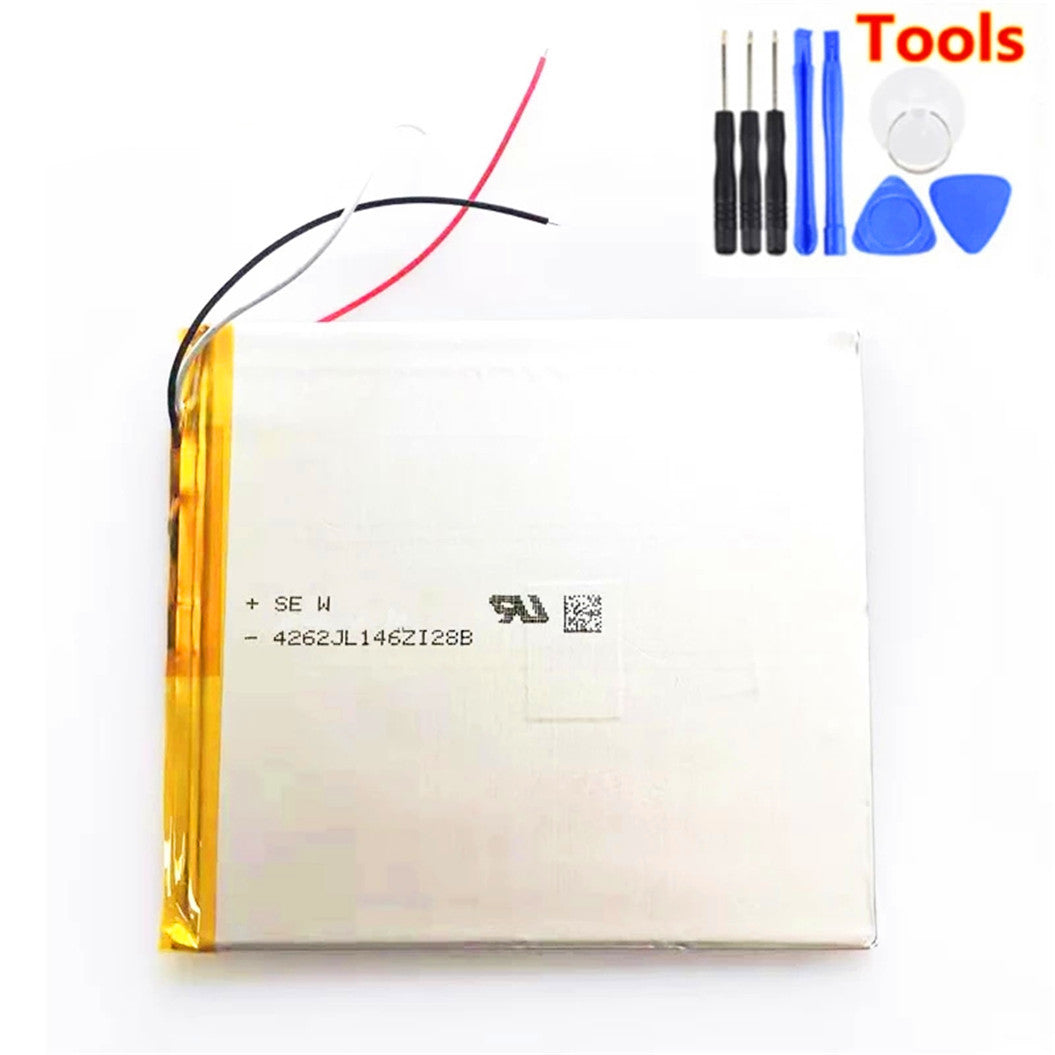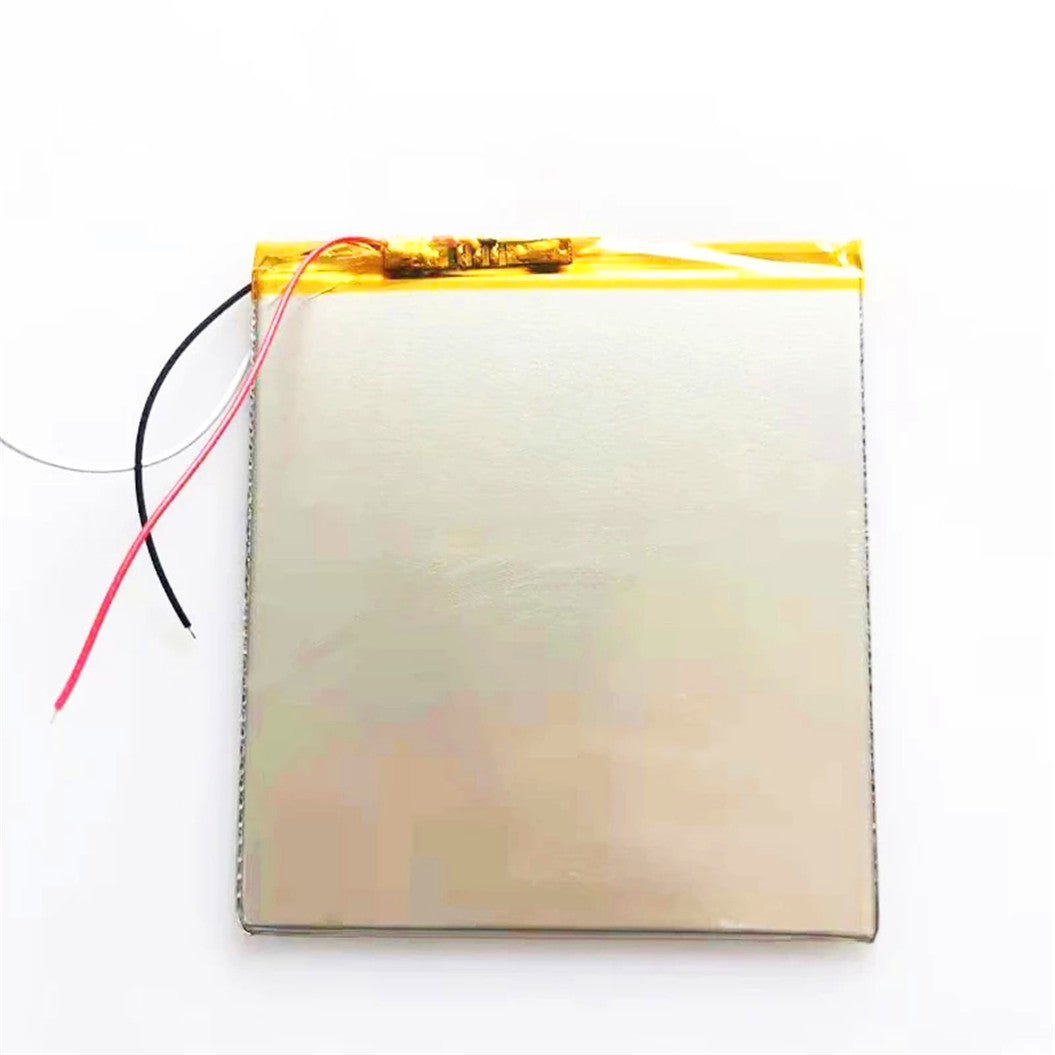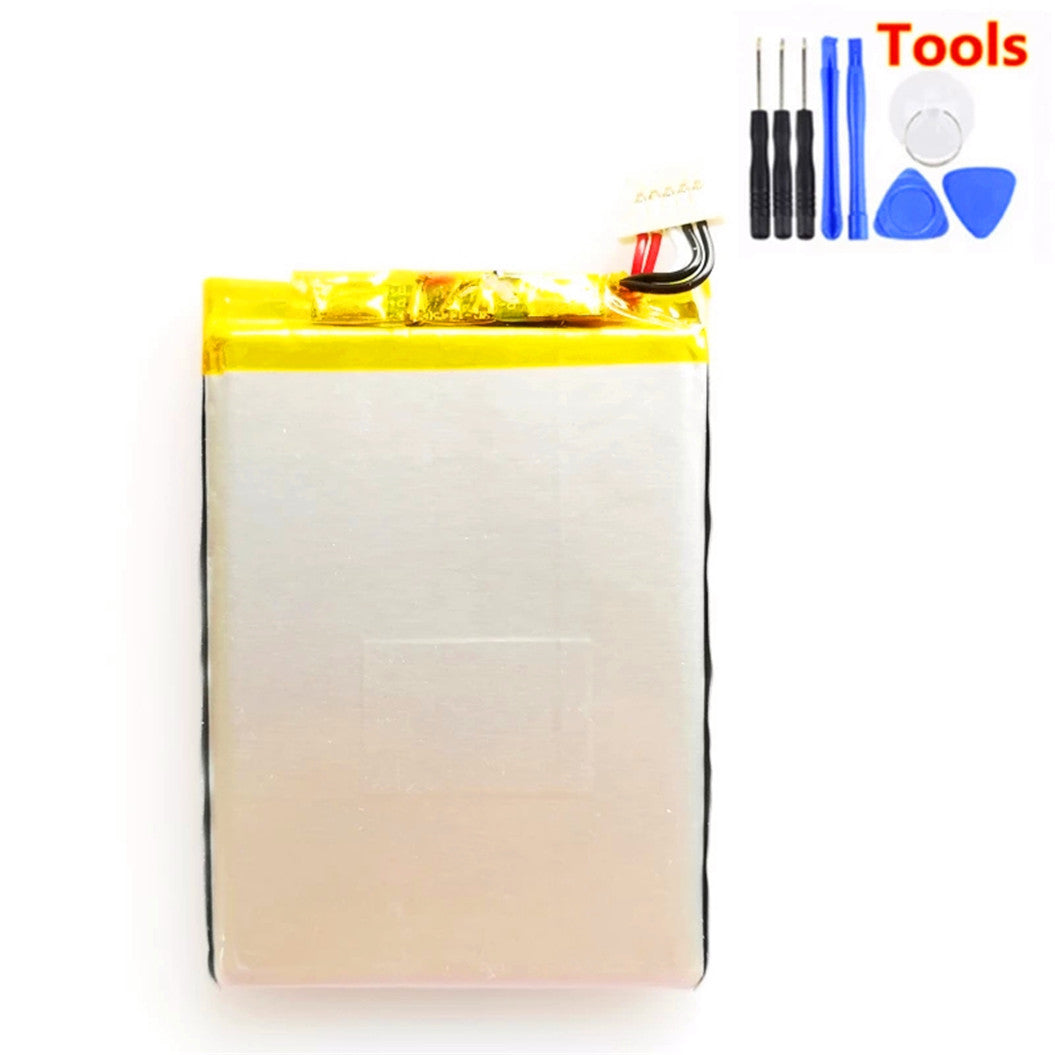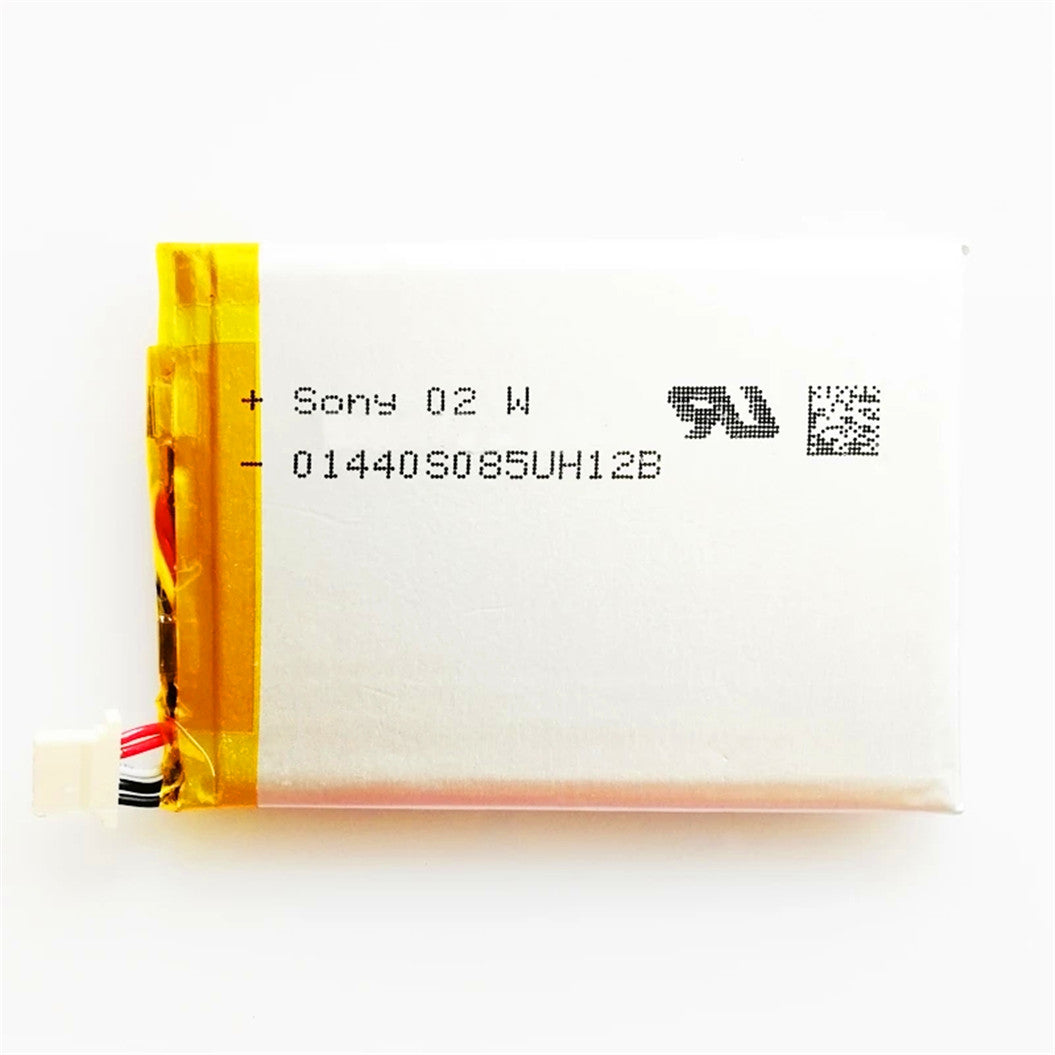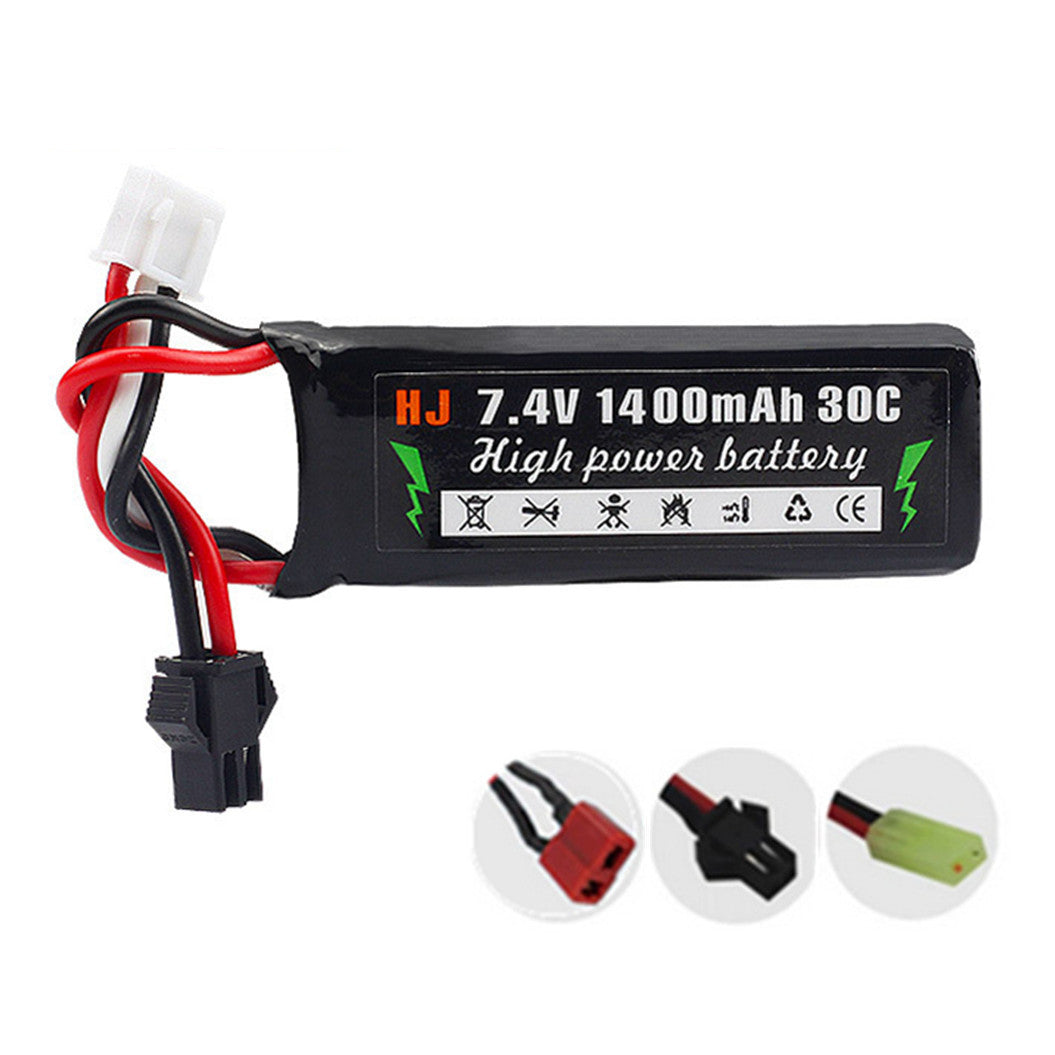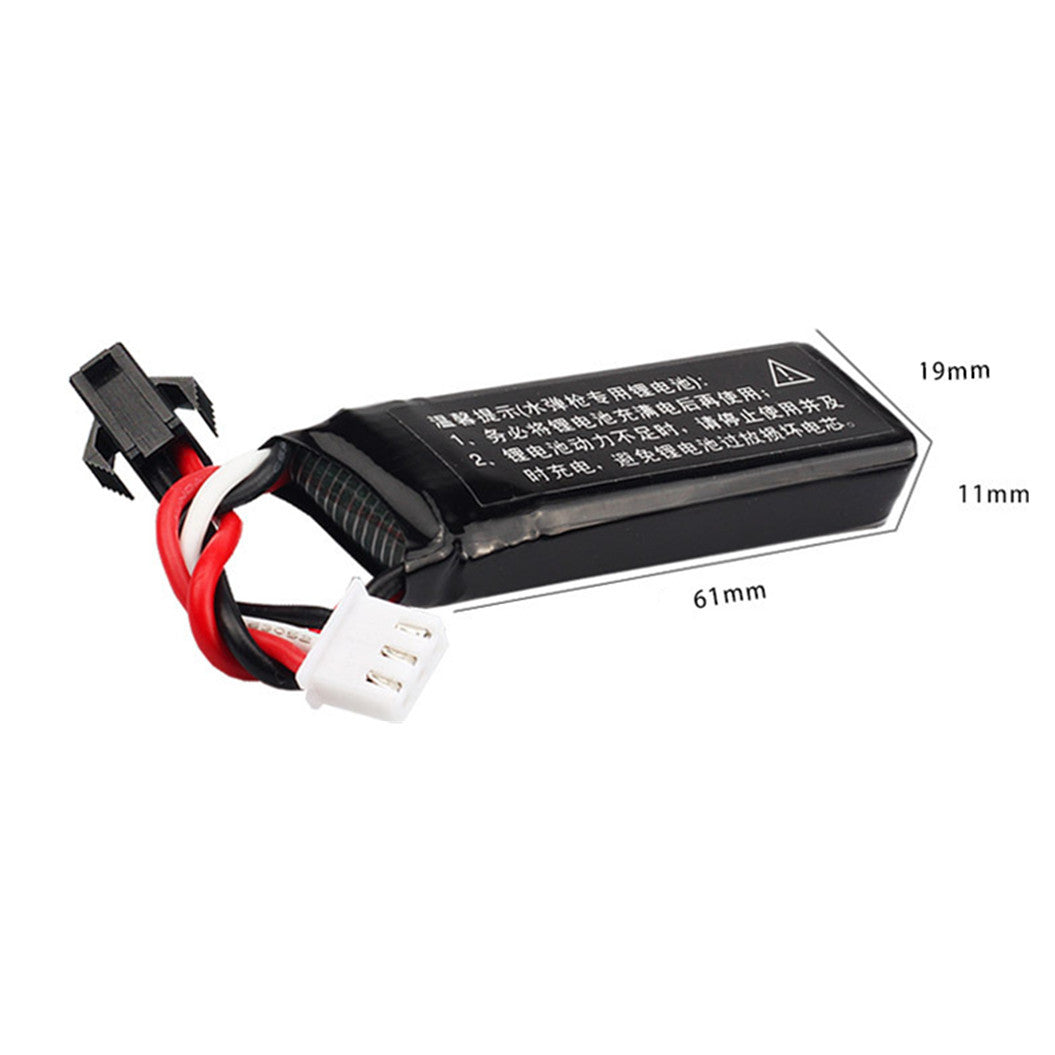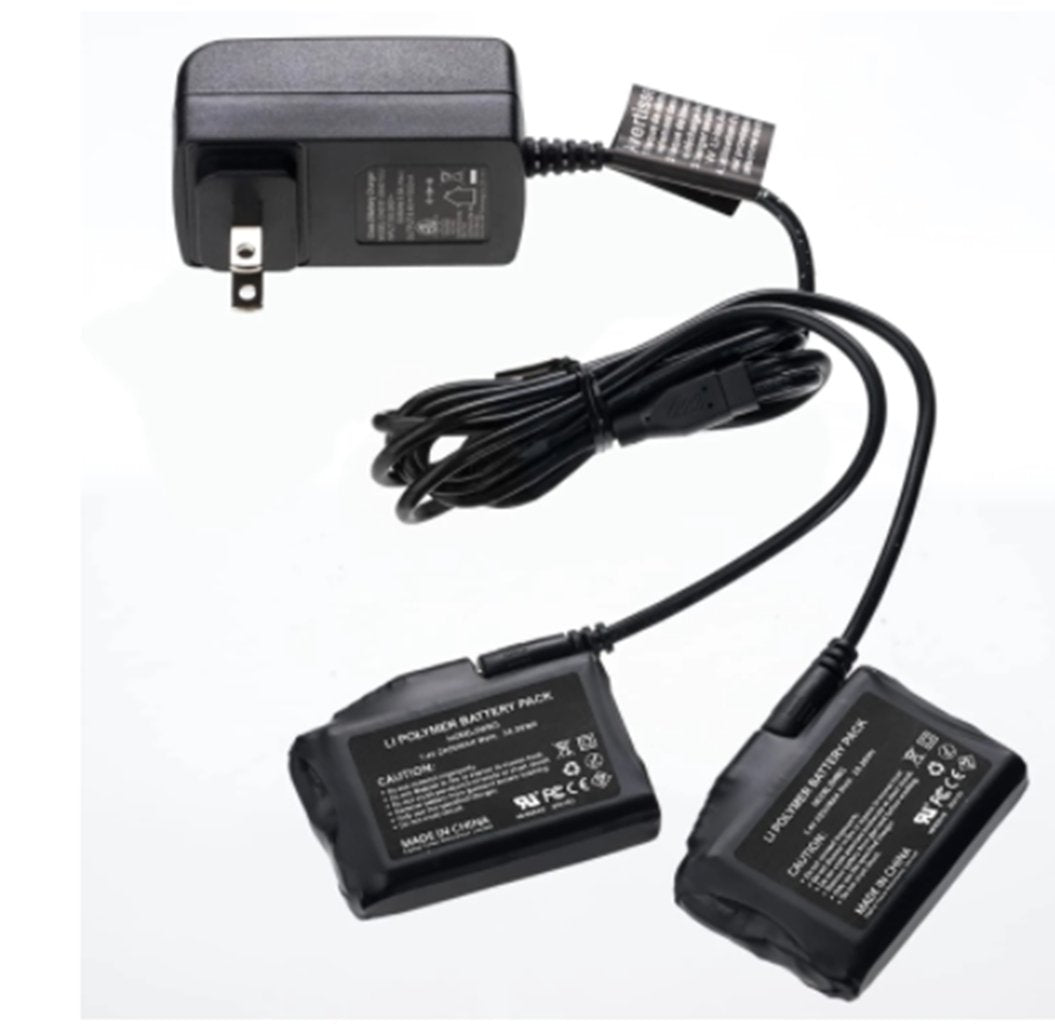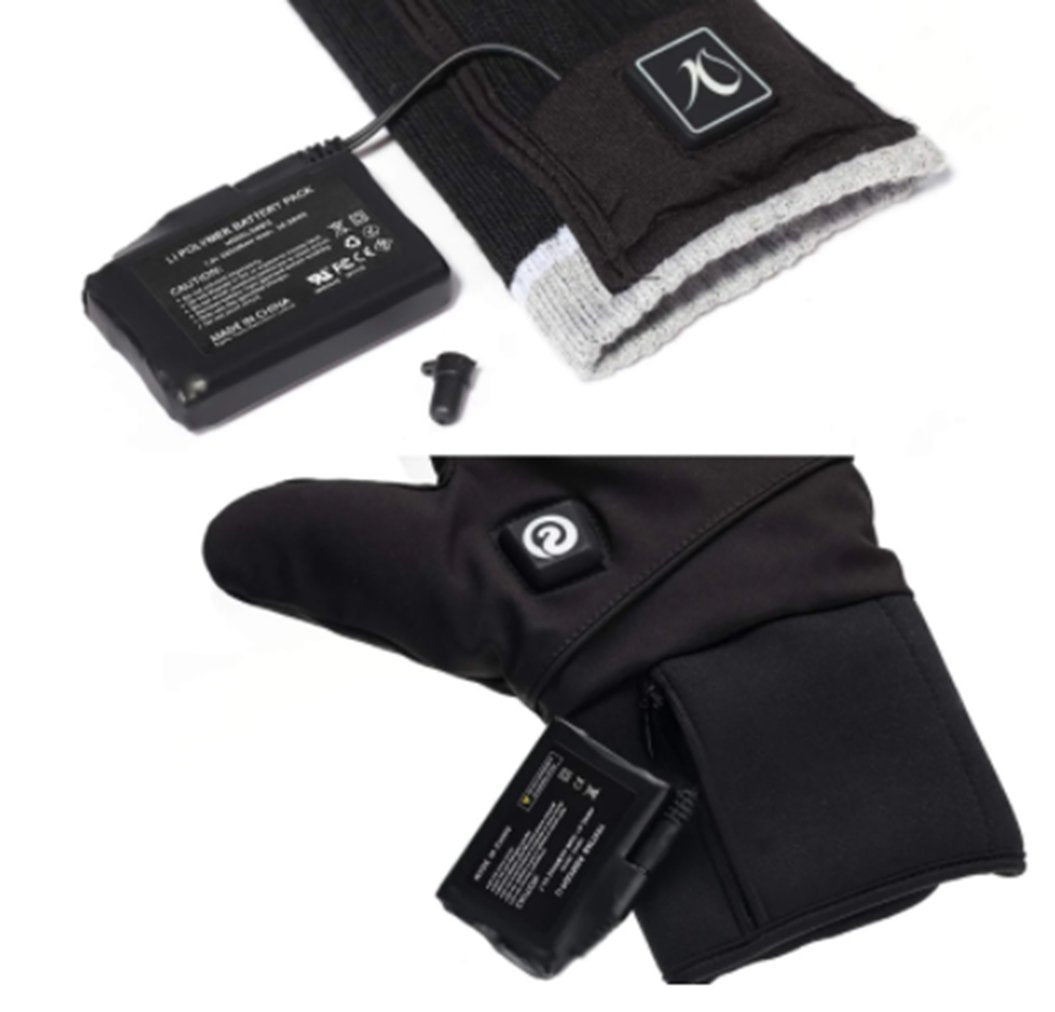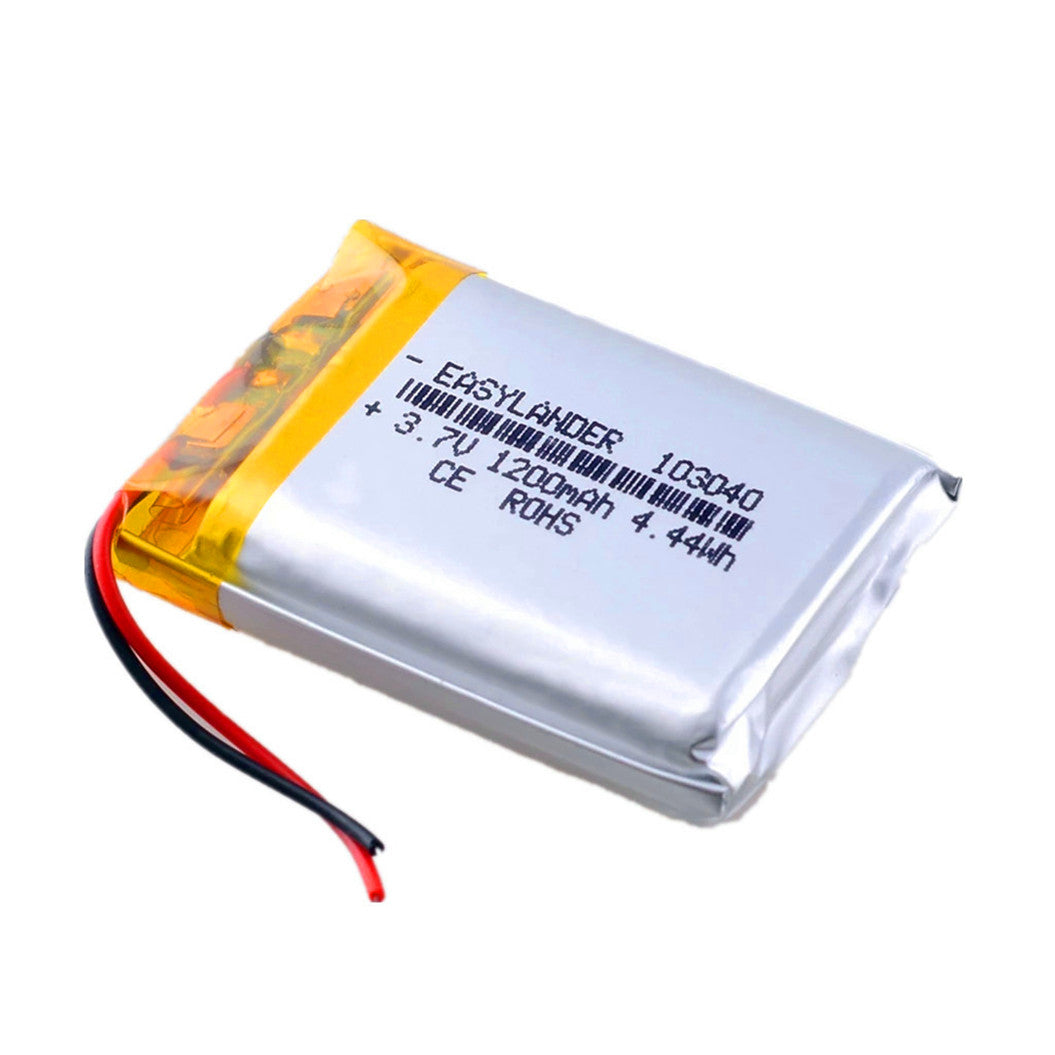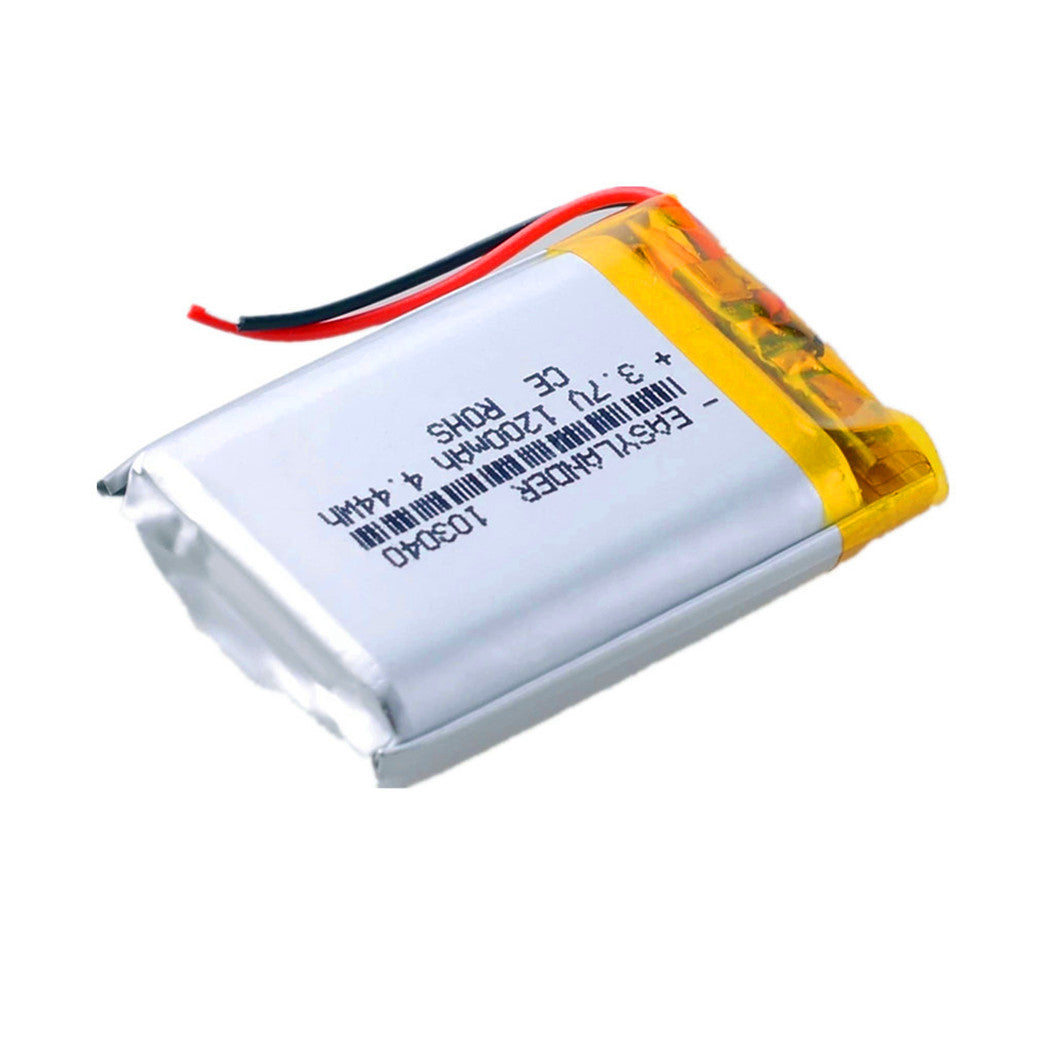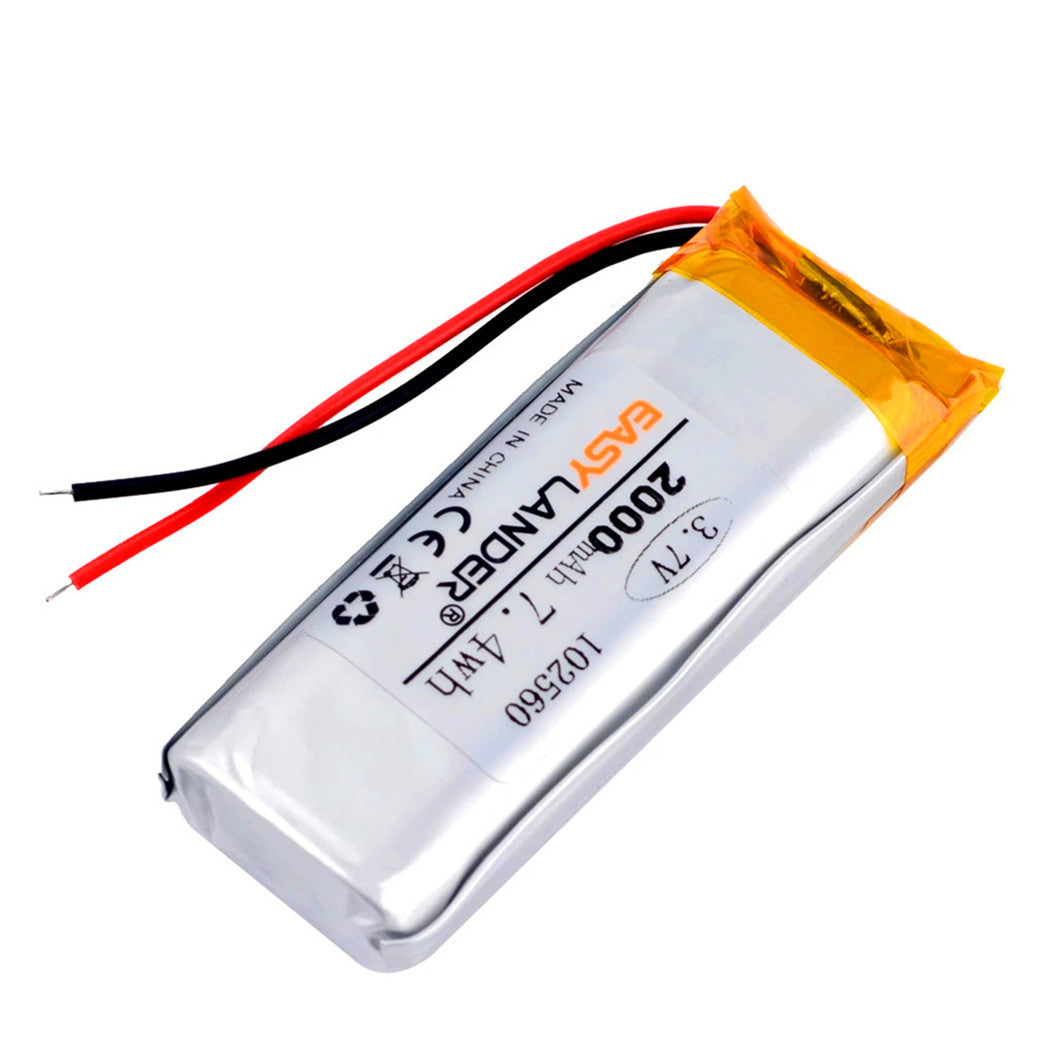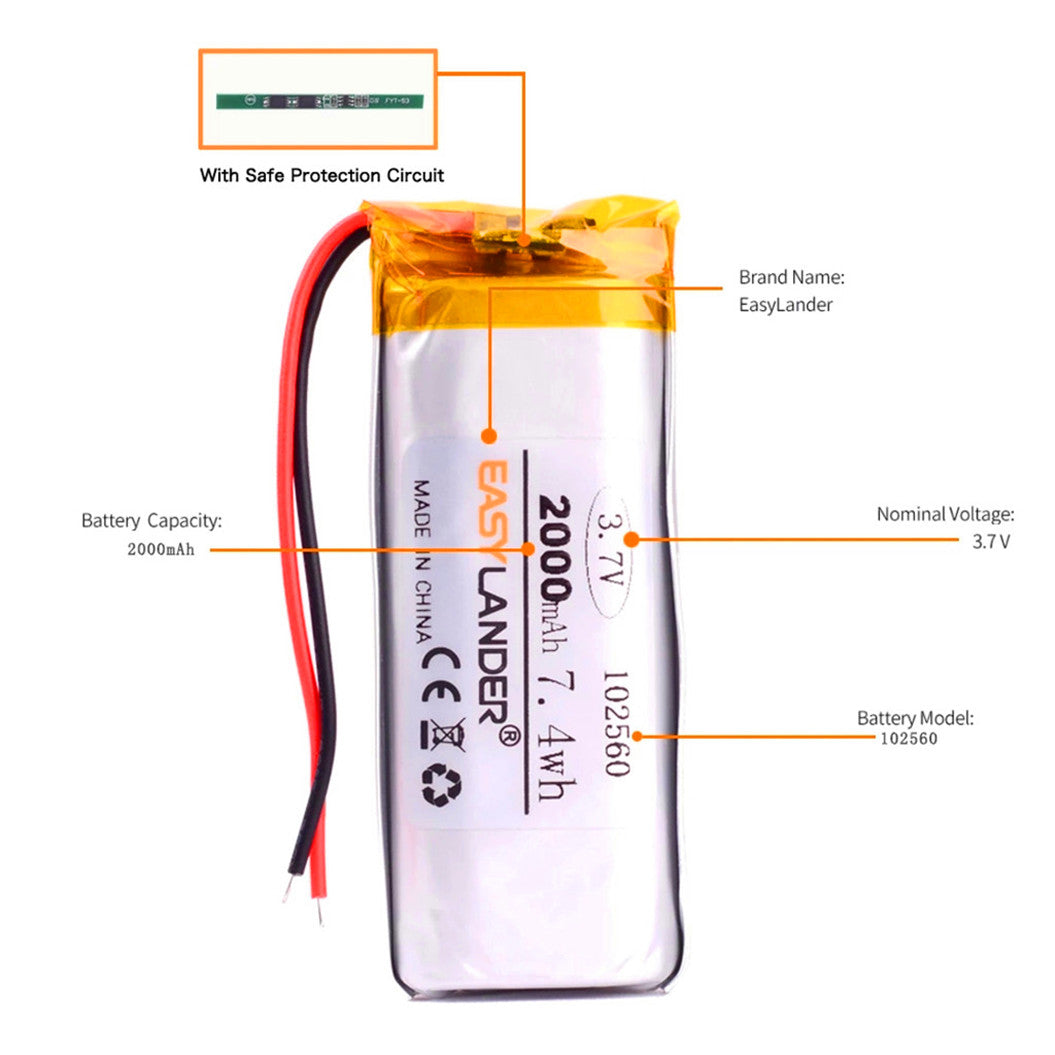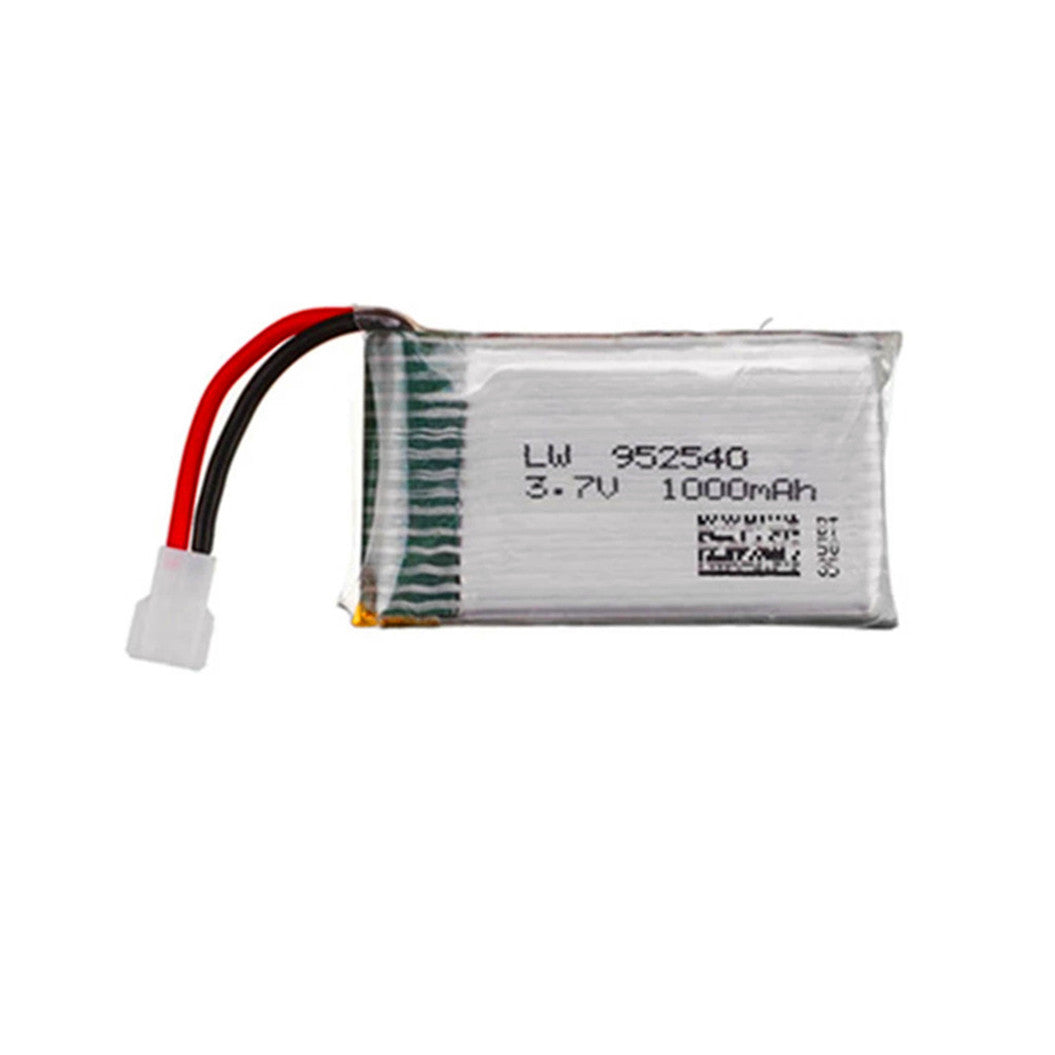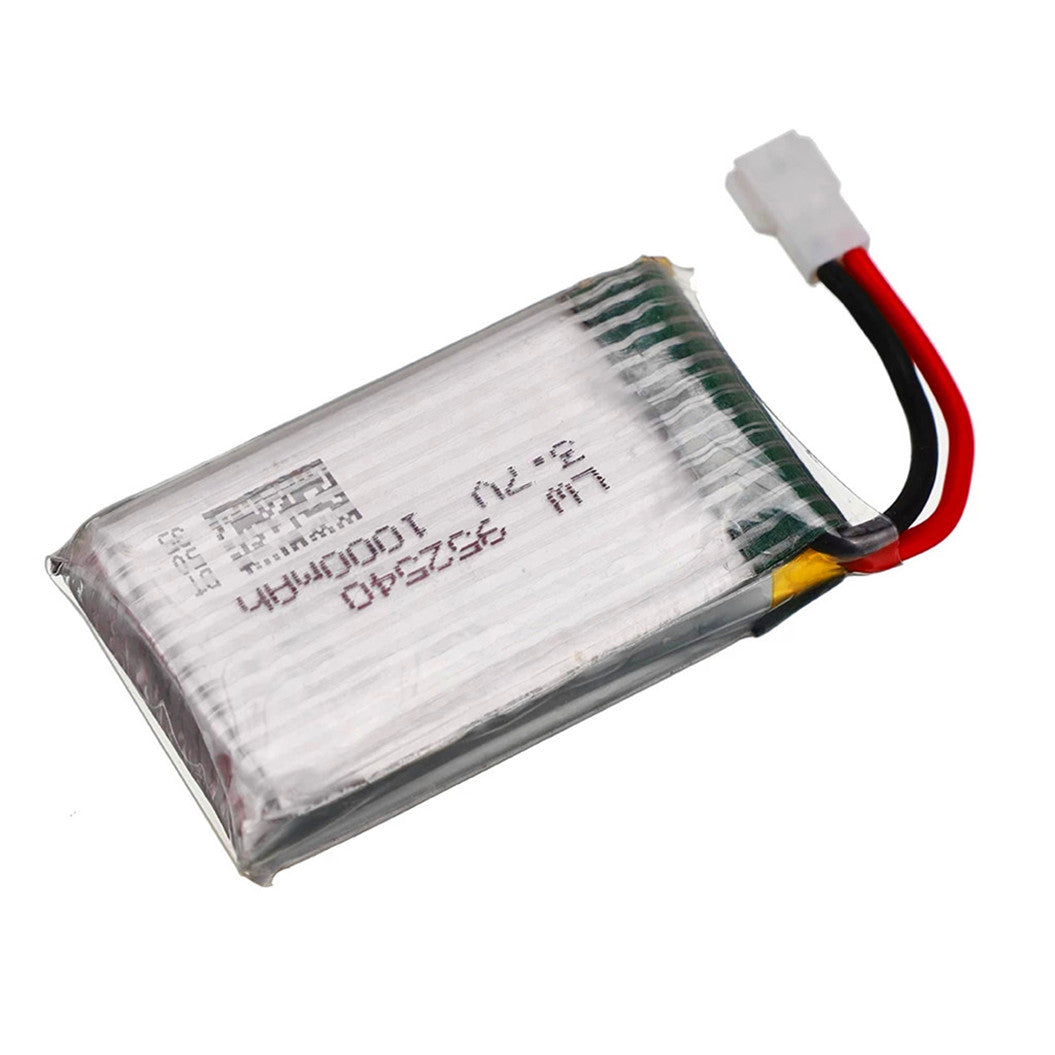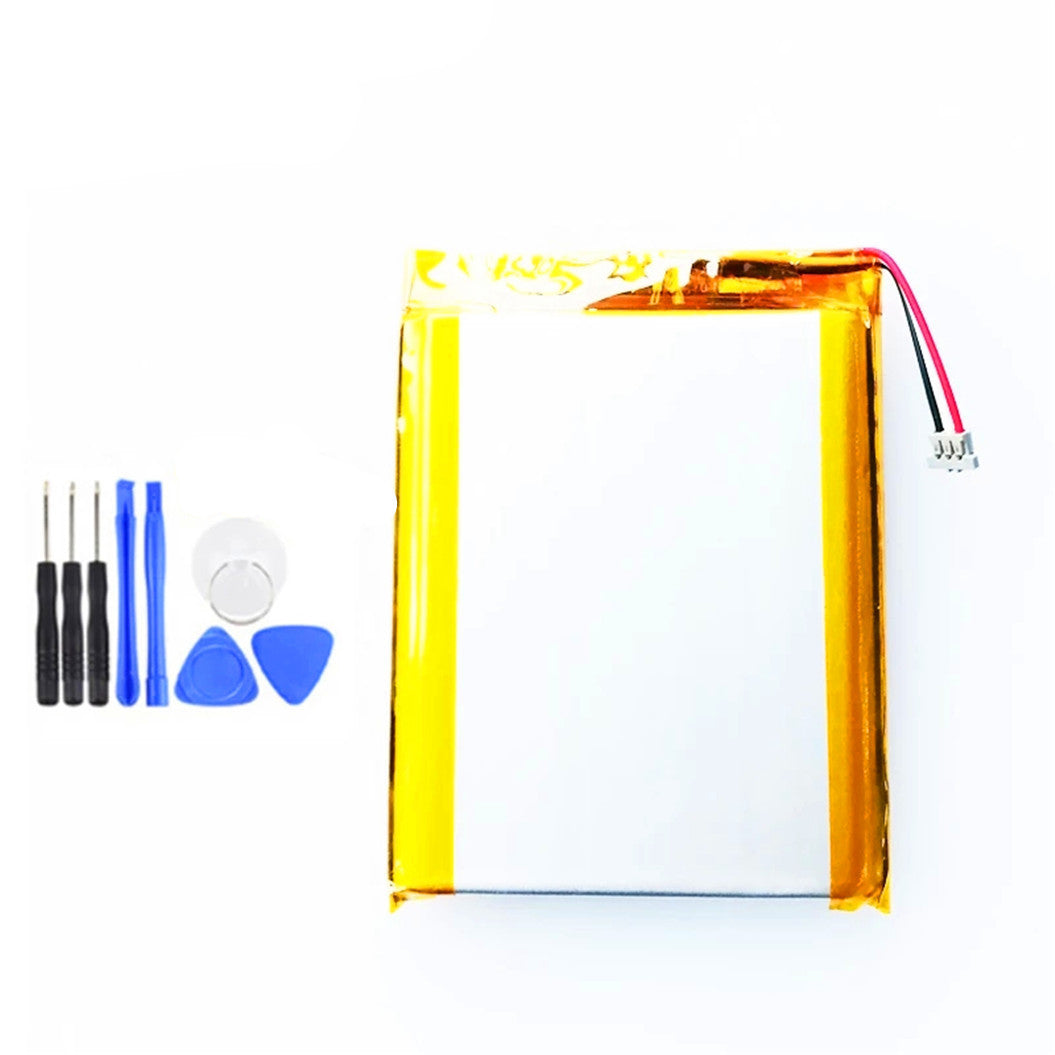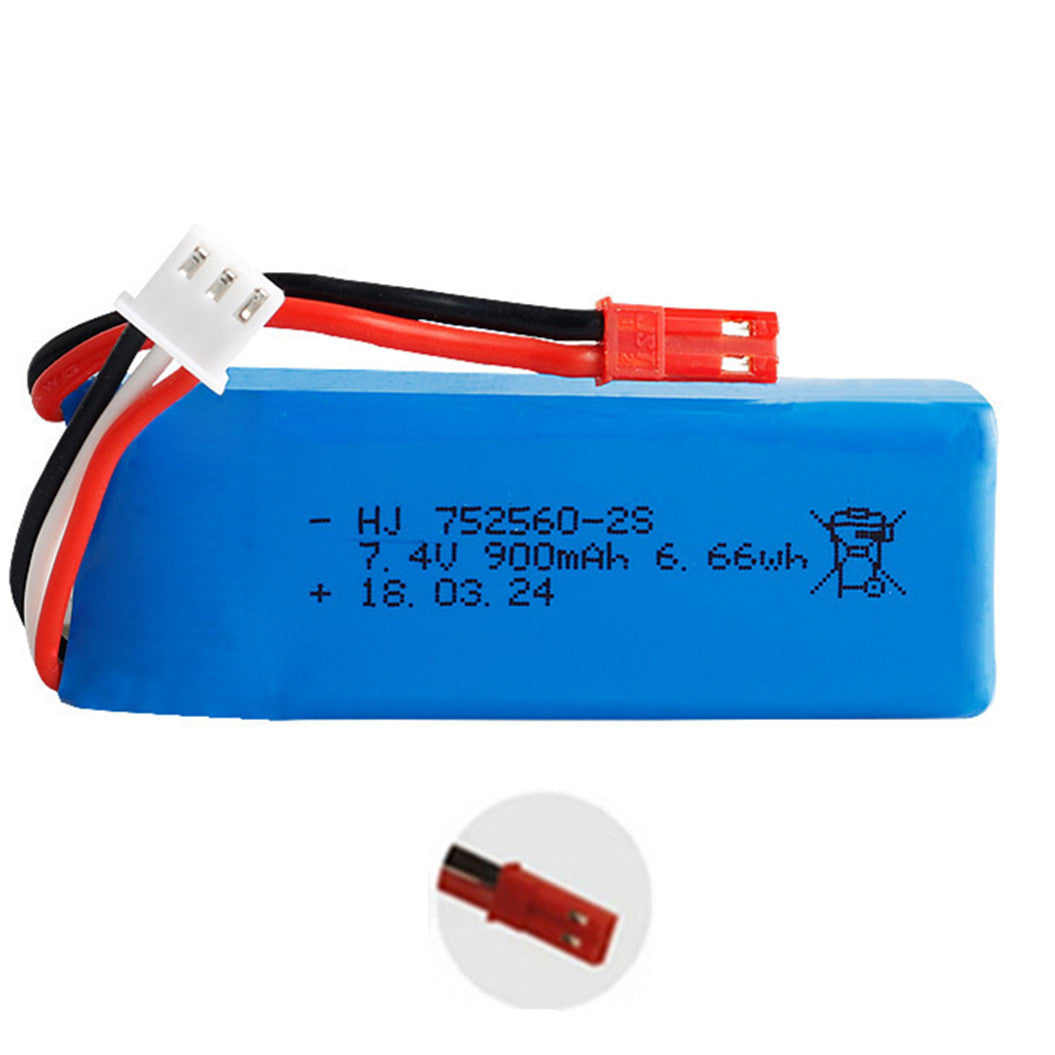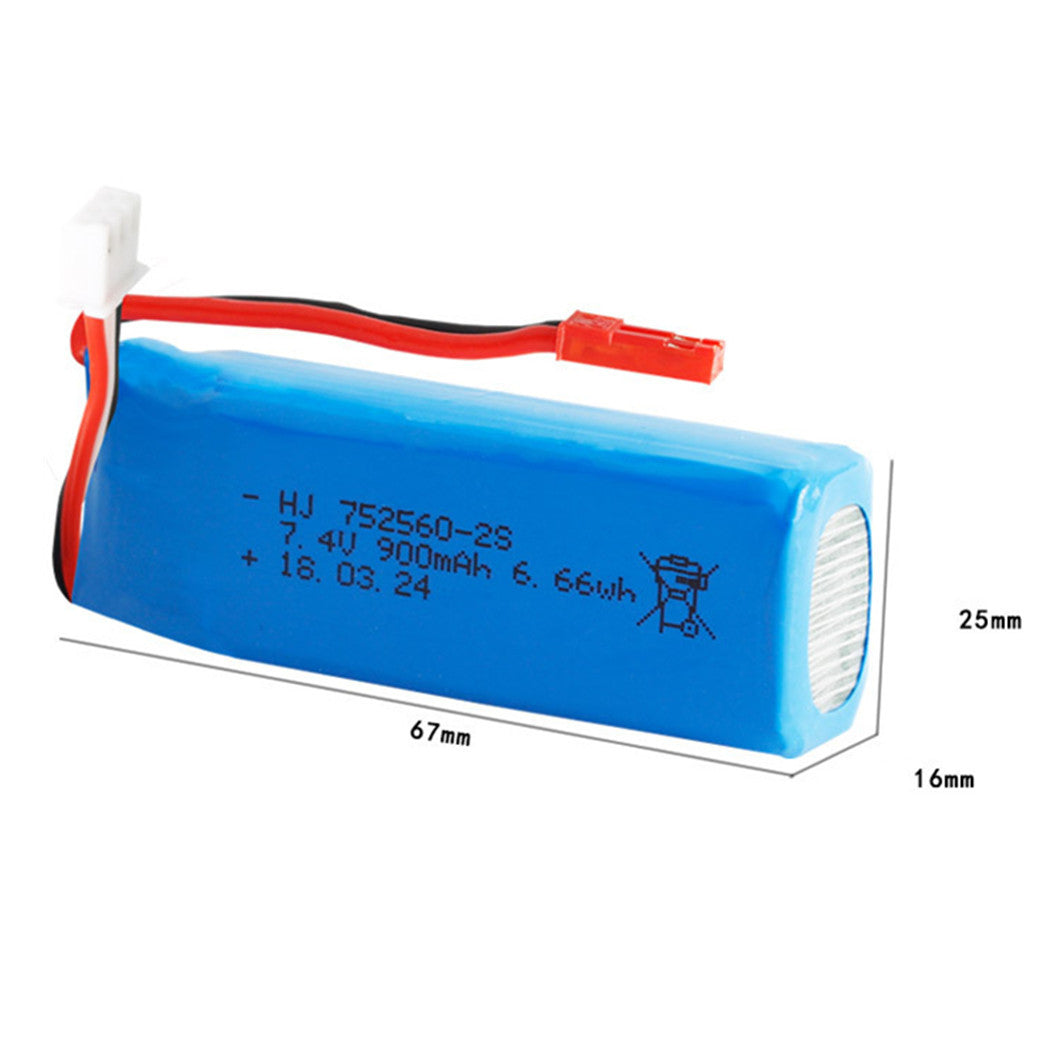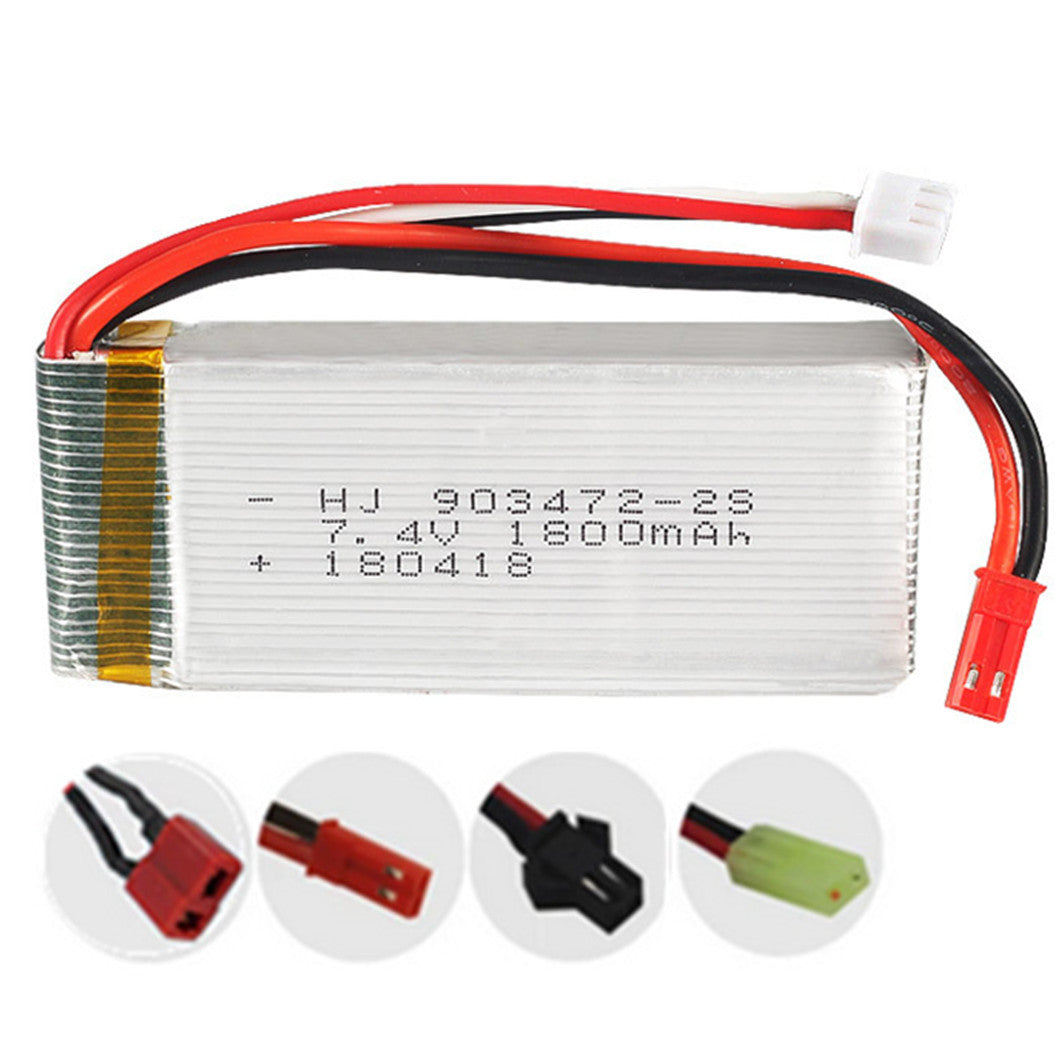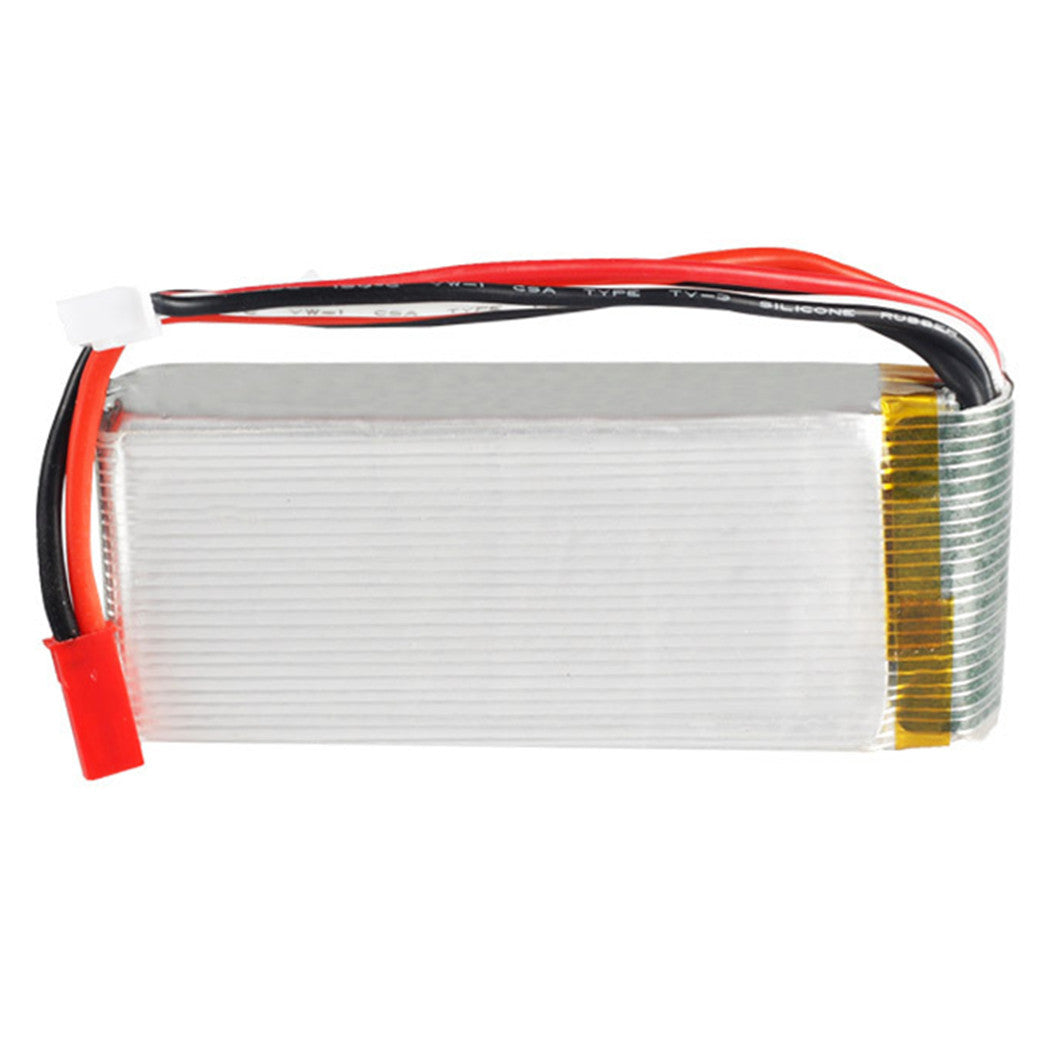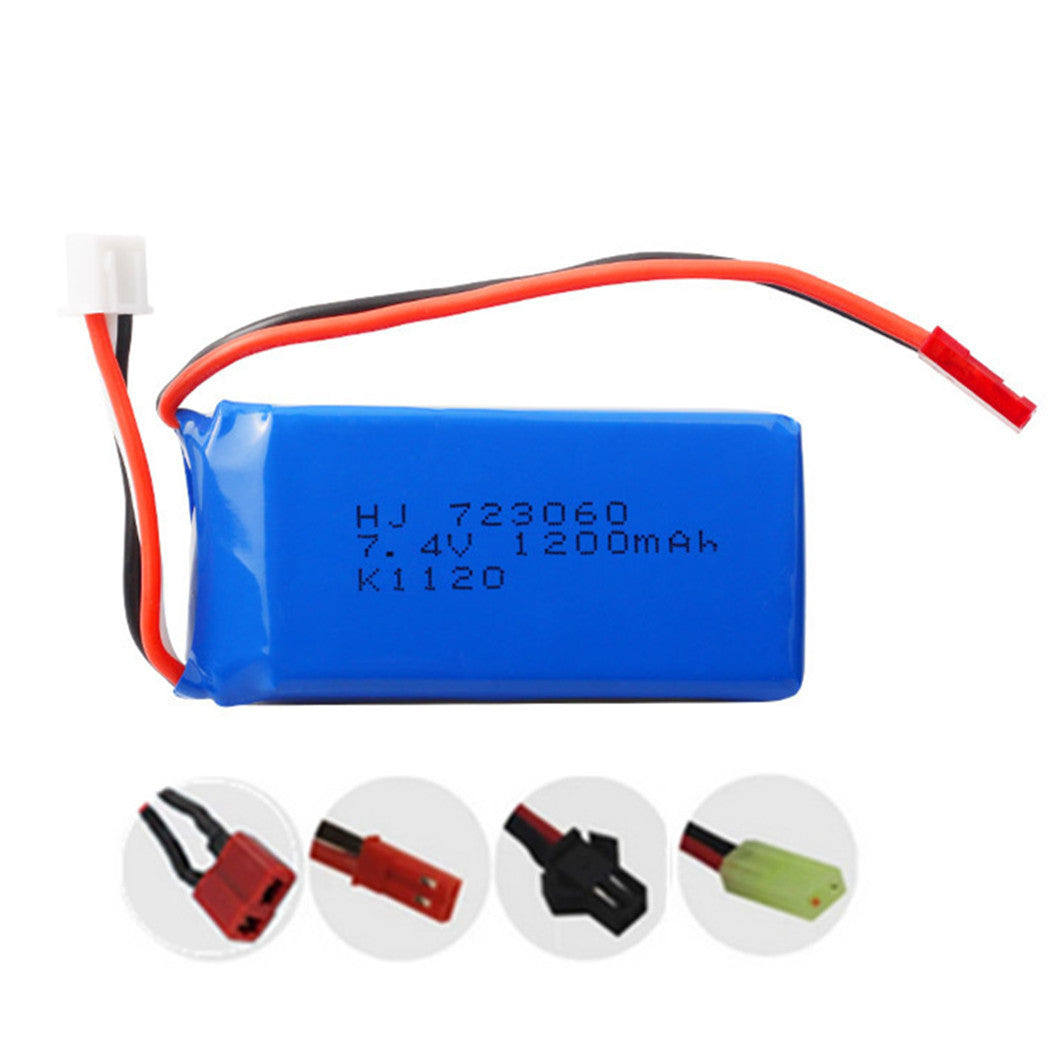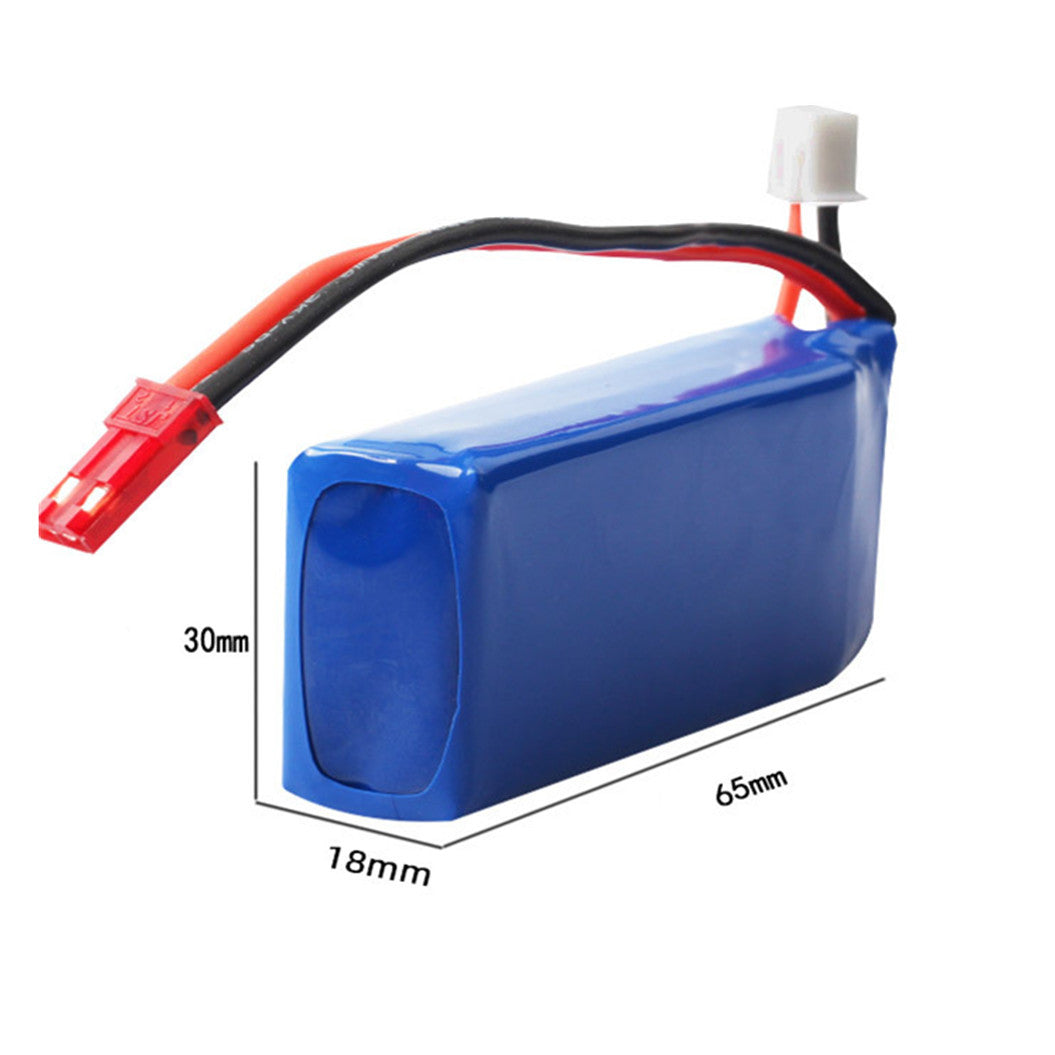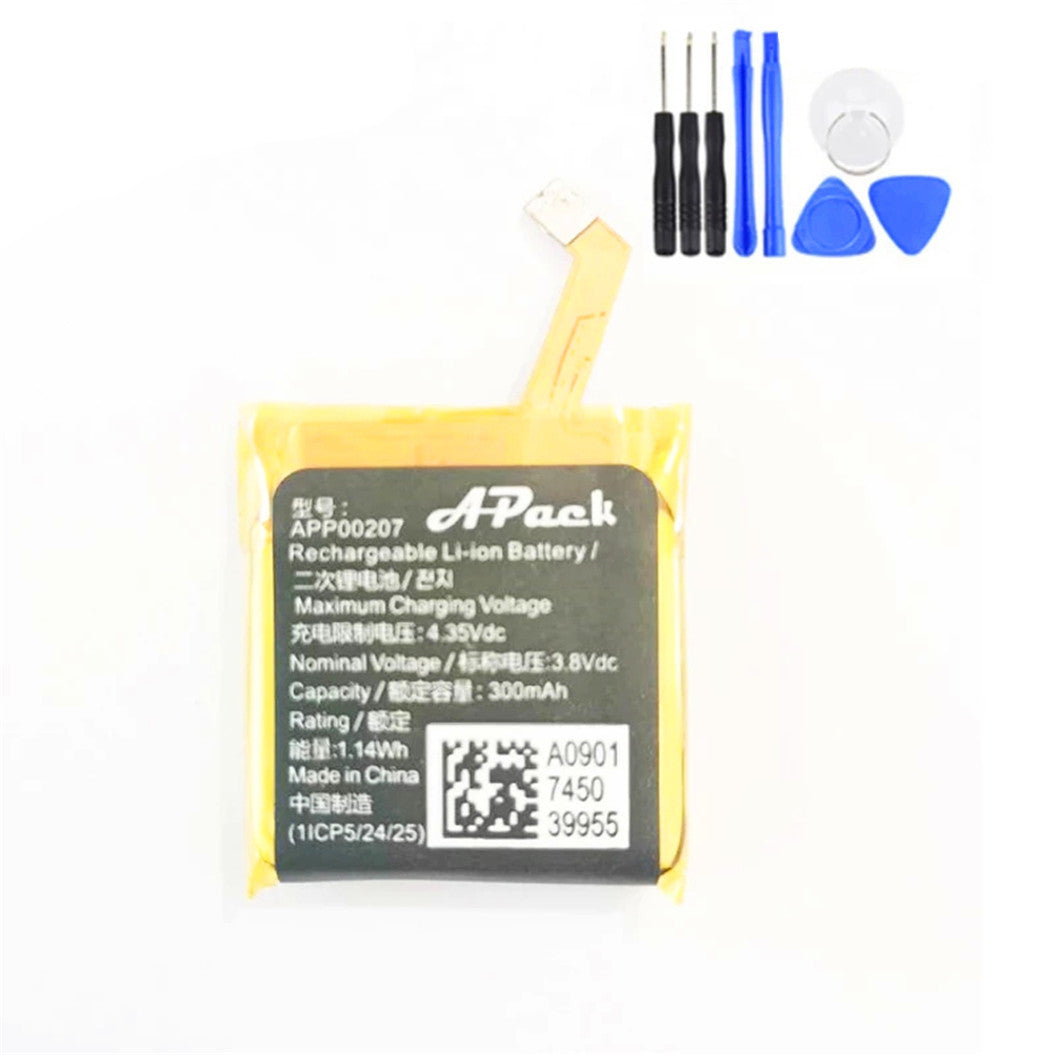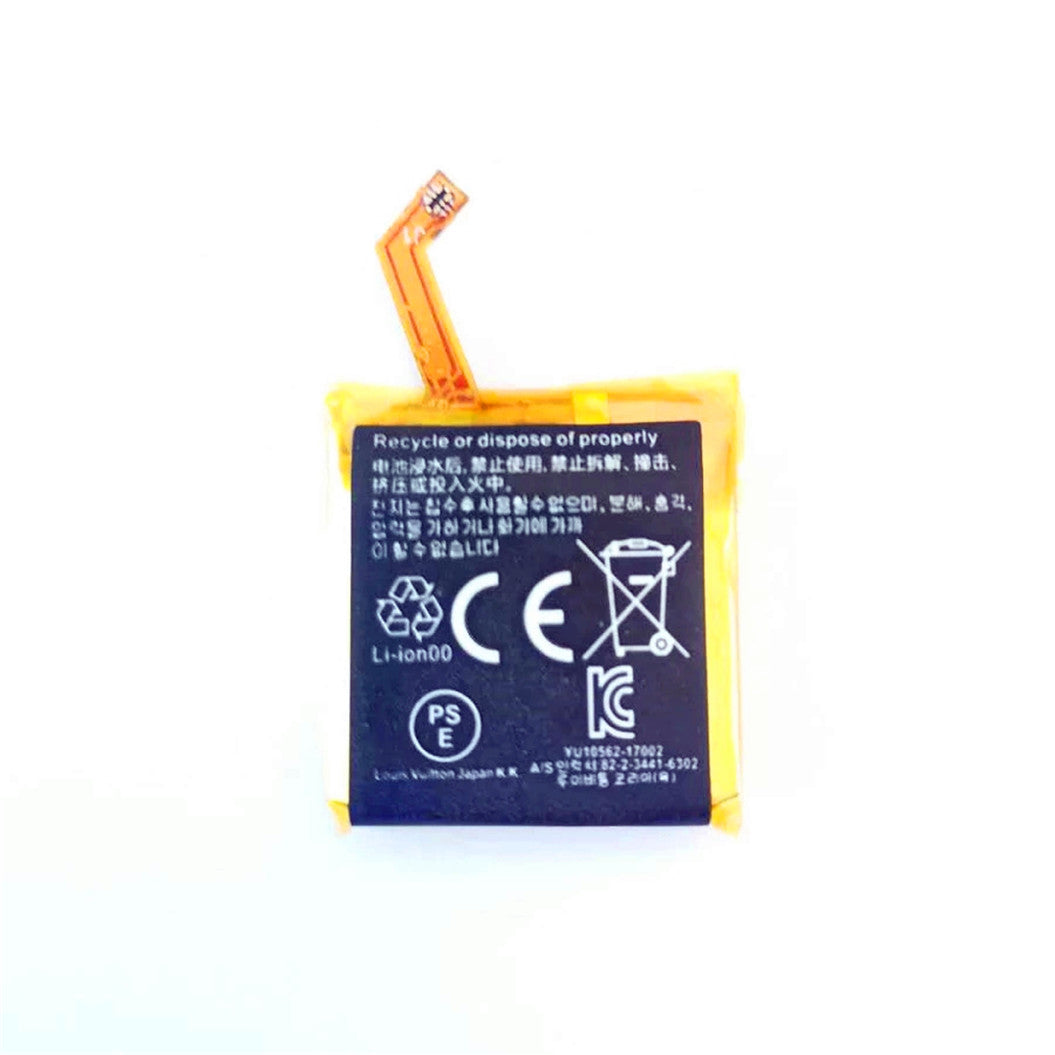-
販売元:BATTERYINT
3.7V 3000mAh バッテリー Onyx Boox Nova 7.8インチ電子リーダー 交換用蓄電池 3ワイヤー+ツール
- 通常価格
- $24.72
- 通常価格
-
- セール価格
- $24.72
- 単価
- あたり
3.7V 3000mAh バッテリー Onyx Boox Nova 7.8インチ電子リーダー ... -
販売元:BATTERYINT
3.7V 2000mAh 交換用蓄電池 POLAR V650 5ピンプラグ+ツール
- 通常価格
- $22.20
- 通常価格
-
- セール価格
- $22.20
- 単価
- あたり
3.7V 2000mAh 交換用蓄電池 POLAR V650 5ピンプラグ+ツール 製品情報:... -
販売元:BATTERYINT
2本セット 7.4V 1400mAh 501855 リポバッテリー Hubsan H501A H501S リモコン送信機用
- 通常価格
- $17.00
- 通常価格
-
- セール価格
- $17.00
- 単価
- あたり
2本セット 7.4V 1400mAh 501855 リポバッテリー Hubsan H501A ... -
販売元:BATTERYINT
7.4V-3000mAh 充電式リチウムポリマーバッテリー ヒートソックスインソール用加熱手袋バッテリーパック+充電器
- 通常価格
- $29.99
- 通常価格
-
- セール価格
- $29.99
- 単価
- あたり
7.4V-3000mAh 充電式リチウムポリマーバッテリー ヒートソックスインソール用加熱手袋... -
販売元:BATTERYINT
3.7V 1200mAh 103040 ポリマー リチウムイオンバッテリー MP3プレーヤー VR DVR MP4 MP5 用
- 通常価格
- $10.99
- 通常価格
-
- セール価格
- $10.99
- 単価
- あたり
3.7V 1200mAh 103040 ポリマー リチウムイオンバッテリー MP3プレーヤー ... -
販売元:BATTERYINT
3.7V 2000mAh 102560 リチウムポリマーバッテリーパック 電子書籍 モバイル電源 DIY タブレット用
- 通常価格
- $10.99
- 通常価格
-
- セール価格
- $10.99
- 単価
- あたり
3.7V 2000mAh 102560 リチウムポリマーバッテリーパック 電子書籍 モバイル電... -
販売元:BATTERYINT
2個セット 3.7V 1000mAh 25C リチウムバッテリー 952540(Syma X5C X5S X5SW RCクアッドコプター用予備パーツ)
- 通常価格
- $10.90
- 通常価格
-
- セール価格
- $10.90
- 単価
- あたり
2個セット 3.7V 1000mAh 25C リチウムバッテリー 952540(Syma X5... -
販売元:BATTERYINT
PSV2000 用 3.7V 3200mAh 電池 ソニー PCH - 2007 4 - 451 - 971 - 01 SP86R PS Vita 2007 3 本線プラグ付き + ツール
- 通常価格
- $24.29
- 通常価格
-
- セール価格
- $24.29
- 単価
- あたり
PSV2000 用 3.7V 3200mAh 電池 ソニー PCH - 2007 4 - 45... -
販売元:BATTERYINT
7.4V 900mAh 752560 Li-Polymer バッテリー XK X520 XK X420 RC クアッドコプター
- 通常価格
- $13.20
- 通常価格
-
- セール価格
- $13.20
- 単価
- あたり
7.4V 900mAh 752560 Li-Polymer バッテリー XK X520 XK ... -
販売元:BATTERYINT
7.4V 1800mAh 903472 リチウムポリマーバッテリー Tプラグ付き、モデル飛行機、カー、ボートモデル用
- 通常価格
- $22.50
- 通常価格
-
- セール価格
- $22.50
- 単価
- あたり
7.4V 1800mAh 903472 リチウムポリマーバッテリー Tプラグ付き、モデル飛行機... -
販売元:BATTERYINT
7.4V 1200mAh 723060 Li-Polymer バッテリー V262 V333 充電式 RC ドローン用
- 通常価格
- $14.80
- 通常価格
-
- セール価格
- $14.80
- 単価
- あたり
7.4V 1200mAh 723060 Li-Polymer バッテリー V262 V333 ... -
販売元:BATTERYINT
3.8V 300mAh 交換用バッテリー LV Apack APP00207 Tambour Horizon スマートウォッチ用
- 通常価格
- $49.90
- 通常価格
-
- セール価格
- $49.90
- 単価
- あたり
3.8V 300mAh 交換用バッテリー LV Apack APP00207 Tambour ...
ショーイング 49 -60 の 344 項目
1. How to Charge Lipo Battery?
These are the safe charging tips for LiPo batteries:
- Always use a charger specifically designed for LiPo batteries to prevent overcharging or undercharging.
- Before charging, set the charger’s current and voltage to match the battery’s specifications, typically at 1C, which is twice the battery’s capacity.
- During charging, place the lithium ion polymer battery in a fireproof bag or on a flat surface that is free of flammable materials.
- Closely monitor the lithium polymer battery during charging and ensure that it is not left unattended for extended periods.
- Always use a charger specifically designed for LiPo batteries to prevent overcharging or undercharging.
- Before charging, set the charger’s current and voltage to match the battery’s specifications, typically at 1C, which is twice the battery’s capacity.
- During charging, place the lithium ion polymer battery in a fireproof bag or on a flat surface that is free of flammable materials.
- Closely monitor the lithium polymer battery during charging and ensure that it is not left unattended for extended periods.
2. How to Store Lipo Battery?
When storing Lithium Polymer (LiPo) batteries, they should be kept at approximately 50% charge, which will help to prolong battery life. The lithium ion polymer battery should be stored in a dry, cool environment, away from direct sunlight and extreme temperatures.
In addition, batteries should be stored in a fireproof bag or special safety box to prevent accidents. In addition, if not used for a long period, perform a light charge and discharge every few months to maintain battery performance.
In addition, batteries should be stored in a fireproof bag or special safety box to prevent accidents. In addition, if not used for a long period, perform a light charge and discharge every few months to maintain battery performance.
3. What Is the Lifespan of a Lipo Battery?
In general, lithium polymer batteries can support approximately 300 to 500 charge/discharge cycles if properly used and maintained. To extend battery life, avoid overcharging and over-discharging, and keep the lithium ion polymer battery at the proper temperature during use and storage.
4. How to Prevent Lipo Battery from Expansion and Explosion?
These tips below prevent lithium polymer (lipo) batteries from expanding or explosion:
- Ensure that you are using a charger that is specifically designed for LiPo batteries and that you strictly follow the battery’s charging specifications.
- Avoid exposing the lithium polymer battery to extreme temperatures or direct sunlight during charging and use.
- Ensure that the lithium ion polymer battery is not physically damaged. Regularly inspect the battery for any signs of wear or damage.
- If the LiPo batteries show signs of swelling, discontinue use immediately to prevent further risks such as expansion or explosion.
- Ensure that you are using a charger that is specifically designed for LiPo batteries and that you strictly follow the battery’s charging specifications.
- Avoid exposing the lithium polymer battery to extreme temperatures or direct sunlight during charging and use.
- Ensure that the lithium ion polymer battery is not physically damaged. Regularly inspect the battery for any signs of wear or damage.
- If the LiPo batteries show signs of swelling, discontinue use immediately to prevent further risks such as expansion or explosion.
5. What Is the Difference Between a 4s Lipo Battery and a 3s LiPo Battery?
The main differences between 4s lipo batteries and 3s LiPo batteries are the number of cells and the total voltage. 3s batteries consist of three cells in series and typically have a voltage of 11.1 volts, while 4s batteries consist of four cells in series and typically have a voltage of 14.8 volts.
However, higher voltages may also require electronic equipment to have a higher voltage tolerance, so the voltage compatibility of equipment must be considered when choosing a lithium polymer battery.
However, higher voltages may also require electronic equipment to have a higher voltage tolerance, so the voltage compatibility of equipment must be considered when choosing a lithium polymer battery.
6. How Long Does It Take to Charge a 4s Lipo Battery?
Typically, most 4-cell LiPo batteries take about 1 to 1.5 hours to fully charge when charged at a 1C charge rate (i.e. the current value for the rated capacity of the battery).
For example, a 5000mAh battery will take about 1 hour to fully charge at 5A charge current. Ensure that you use the appropriate charger for your lithium polymer battery to maintain its health and safety.
For example, a 5000mAh battery will take about 1 hour to fully charge at 5A charge current. Ensure that you use the appropriate charger for your lithium polymer battery to maintain its health and safety.
7. Which Is Better, Lifepo4 or Lipo Battery?
LiFePO4 batteries are known for their longer life and increased safety. It is usually more suitable for applications that require long-term reliability, such as electric vehicles and solar energy storage systems.
LiPo batteries, on the other hand, offer higher energy density and power output. Ideal for devices with stringent weight and size requirements, such as UAVs and RC models.
LiPo batteries, on the other hand, offer higher energy density and power output. Ideal for devices with stringent weight and size requirements, such as UAVs and RC models.
8. Which Is Better, Nimh or Lipo Battery?
NiMH batteries are more environmentally friendly and less expensive, making them suitable for every day and low-power devices.
LiPo batteries, on the other hand, offer higher energy density and discharge rates, making them more suitable for use in high-power devices such as drones and high-performance RC cars.
LiPo batteries, on the other hand, offer higher energy density and discharge rates, making them more suitable for use in high-power devices such as drones and high-performance RC cars.

